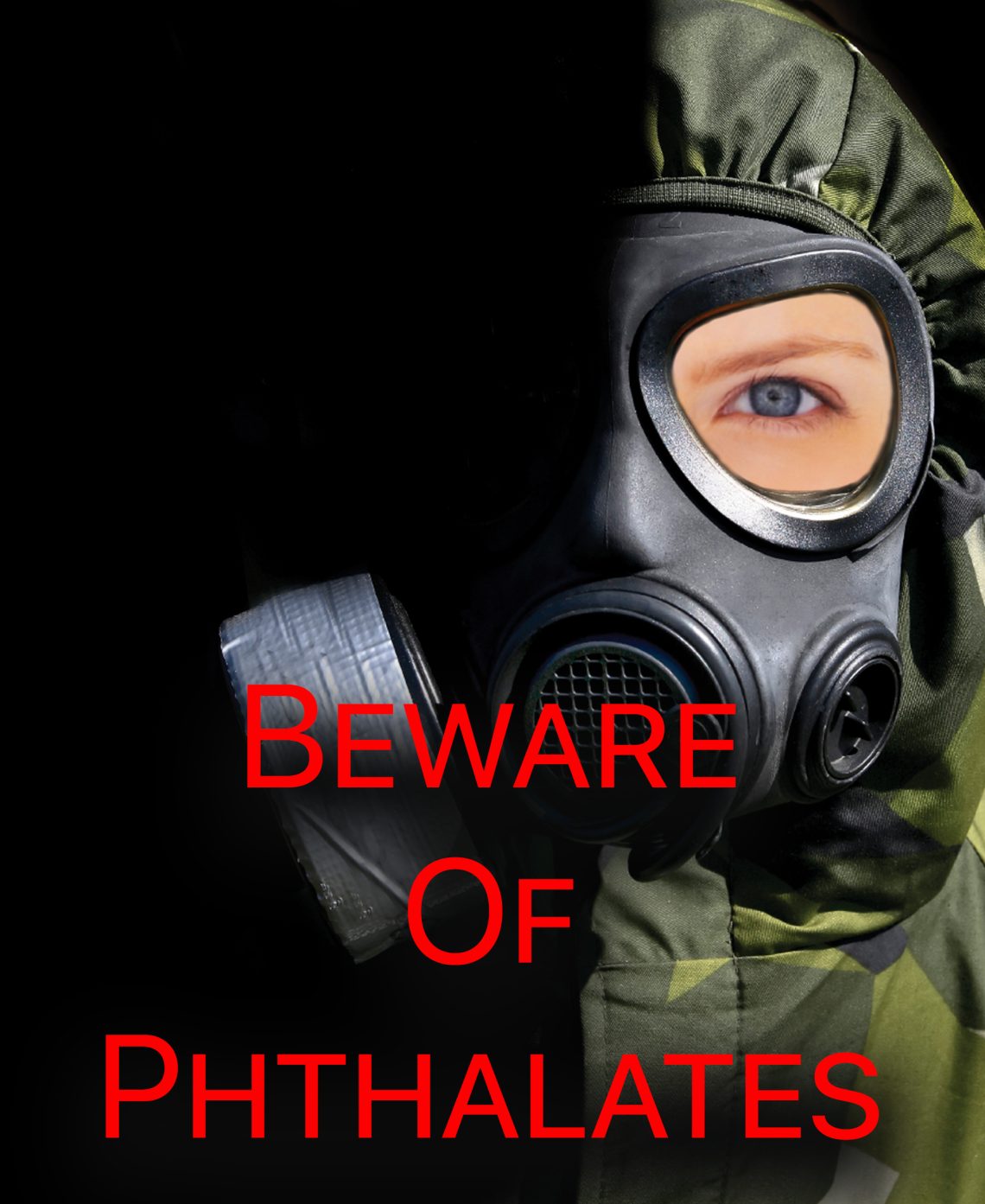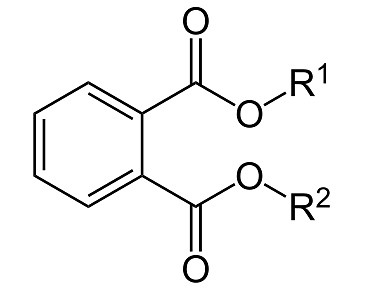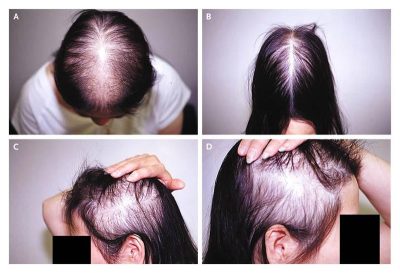
Phthalates – Diabetes + Hair Loss
So what are Phthalates? The Everywhere Chemical
Phthalates are perhaps the nastiest chemicals found in personal care products. The FDA banned them for food, but not personal care. Perhaps the FDA has forgotten that skin absorption is the same as ingesting chemical
In my book, Chemical-Free Skin Health®, I spent much time explaining Phthalates. Here is a quick summary
What are phthalates?

Phthalates are a family of artificial chemical compounds developed in the last century to be used to manufacture plastics, solvents, and personal care products. They are colorless, odorless, oily liquids that do not evaporate quickly and do not chemically bind to the material they are added to.
How am I exposed to phthalates?
Ingestion, inhalation, skin absorption, and intravenous injection are potential exposure pathways. The ever-present use of phthalates as an additive to PVC (polyvinyl chloride) products to make them flexible and to personal care products to make fragrances last longer in the past 50 years has resulted in widespread general population exposure.
Phthalates are readily absorbed into the human body and quickly converted to their respective metabolites. Unlike some chemicals, they pass out of the body quickly in urine and feces. Phthalates can interact with each other and increase the exposure effect.
How do phthalates enter the environment?
Heat, agitation, and prolonged storage can release phthalates from a product. The release can occur during all the product lifecycle stages – from production, through use, to disposal.
Which population of humans is at a greater health risk to phthalate exposure?
Children under three are more at risk from phthalates because of their developing, smaller body size and ever-present exposure to children’s products manufactured using multiple types of phthalate compounds. Young children use their mouths to explore and, consequently, can be exposed to higher levels by sucking on products made of phthalate-containing plastics.
What can I do to avoid exposure?
Read labels. Avoid using products that contain phthalates. Support companies committed to producing phthalate-free products.
Now to diabetes and hair loss.
 We have known for decades that chemicals are absorbed into the skin as if they were ingested. Many new drugs are introduced through skin patches, and injections like Covid vaccines are just a few millimeters removed. Examples are the stop-smoking patches that transfer small amounts of nicotine through the skin.
We have known for decades that chemicals are absorbed into the skin as if they were ingested. Many new drugs are introduced through skin patches, and injections like Covid vaccines are just a few millimeters removed. Examples are the stop-smoking patches that transfer small amounts of nicotine through the skin.
Researchers from the University of Michigan say those with higher levels of phthalates in their urine are 30 to 63 percent more likely to develop the metabolic disease.
Phthalates improve the durability of plastics. They are common in personal care products, children’s toys, and food and beverage packaging. Phthalates are even an ingredient in fragrances to help the scent last longer on the skin.
However, scientists also call them endocrine-disrupting chemicals (EDRs) because they mimic estrogen. Studies have linked them to breast and ovarian cancer, as well as early menopause.
“Our research found phthalates may contribute to a higher incidence of diabetes in women, especially White women, over a six-year period,” says Sung Kyun Park, Sc.D., M.P.H., of the University of Michigan School of Public Health, in a media release. “People are exposed to phthalates daily, increasing their risk of several metabolic diseases. We must address EDCs now as they are harmful to human health.”
They may also change how humans store fat, leading to obesity. Other studies have found some phthalates may cause fertility issues. One trial even found women are more likely to give birth prematurely if they have high levels of phthalates in their bloodstream before conceiving.
1 in 20 women developed Type 2 diabetes
An analysis of 1,308 women across the U.S. showed an above-average concentration raised the incidence of Type 2 diabetes by 30 to 63 percent. About five percent of participants developed the condition over the six-year period.
“Our research is a step in the right direction towards better understanding phthalates’ effect on metabolic diseases, but further investigation is needed,” Park concludes.
Poo’s
 “In shampoos, phthalates are often used as gelling agents. The chemical is used in hair cleansers to give them a pleasing smell or to help balance out the formula of the shampoo. A smell that lingers on for days often gives consumers the satisfaction of a clean scalp during their wash routine.
“In shampoos, phthalates are often used as gelling agents. The chemical is used in hair cleansers to give them a pleasing smell or to help balance out the formula of the shampoo. A smell that lingers on for days often gives consumers the satisfaction of a clean scalp during their wash routine.
Manufacturers often include phthalates in shampoos because they act as gelling agents. Gelling agents are thickeners that give shampoo its rich, smooth consistency and help keep the other ingredients together. Phthalates can also help the fragrance last longer. Unfortunately, they come with serious downsides.
“Phthalates are harmful to your hair and scalp health for multiple reasons, yet we come into contact with them on almost a daily basis,” says celebrity hairstylist Andrew Fitzsimons. “Phthalates are found in some of the biggest brand names on the market, so it’s important to be careful when selecting your hair care products … Under current law, manufacturers are not required to list phthalates on their product’s labels.”
But why does this ingredient negatively affect hair health? “Studies have shown that phthalates interfere with your endocrine hormones, which negatively affects your hair’s growth cycle,” says Fitzsimons.
“Using products that contain phthalates can lead to eczema, dandruff, and hair loss,” adds Annagjid “Kee” Taylor, a celebrity hairstylist, salon owner, and founder of Shear Genius Haircare. “Phthalates are not doing any favors to your hair or body and should be avoided. But unfortunately, not all products properly disclose the presence of phthalates — so it’s important for consumers to properly research the products they’re purchasing and using.
There is a reason that we have said for twenty-plus years to get clean and green with your personal care. Here are yet two more reasons. My books coverage of phthalates and microbiological agents like parabens is extensive. And no, it goes without saying we do not use any artificial chemicals in our products.
Thoughts
Over the last 20 years, I have seen catastrophic hair loss in both men and women. In my experience the number one cause is Phthalates followed closely by Azo dies in dark hair colorings. These two are my 80/20 rule for hair loss. The two account for the 80%. Now the data adds diabetes. None of this includes the nasty disorders of the scalp and skin.

